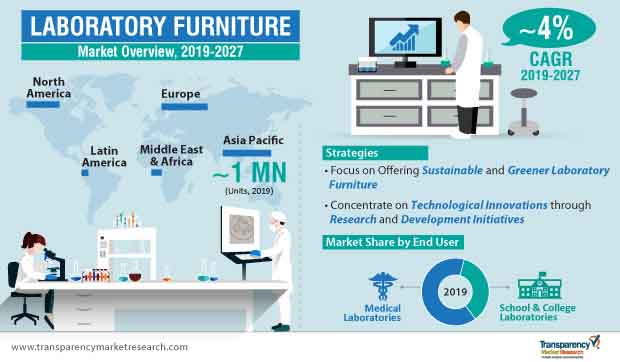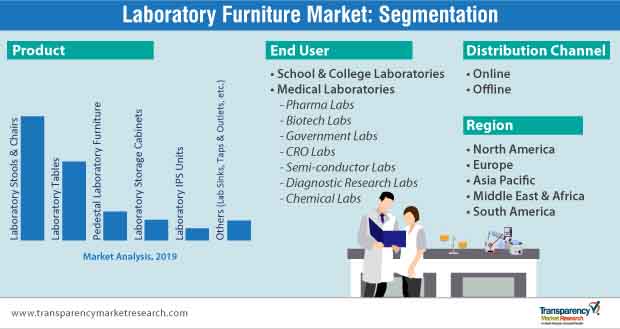
Laboratory furniture designers are routinely perplexed by the ramifications of using traditional laboratory furniture that utilizes 5 times more energy and becomes an impediment to their bottom line. Alternatively, lab furniture manufactures could ponder on the multitude of options that are available to create efficient and functional labs using laboratory furniture that is more sustainable, thus becoming a refinement and harbinger for a safer and more cost-effective strategy. Examples of such labs are flexible laboratories with features such as movable cupboards, or sustainable laboratories with features such as fume hoods to reduce exhaust rates.
Laboratory furniture designers are adopting a new approach to design a crafty lab using furniture that is modular and can assist in future-proofing an existing design. Modular furniture such as storage units, cabinets, and shelves can be re-constructed using simple tools. Eco-friendly design elements can be added without going through a tedious, disruptive, and costly innovation. As moving to a brand new facility is not only costly but also not feasible, juxtaposing existing laboratory furniture with utilities that are more economical, space efficient, and functional is emerging as a key driving factor boosting the growth of the laboratory furniture market.
Innovations in modular lab furniture are becoming very popular, especially for disaster mitigation, in the laboratory furniture market, which recorded sales of ~3.1 billion units in 2018, reaching a valuation of ~US$ 838 million. In the coming years, due to increasing awareness about the environmental impact of manufacturing activities and the need for their reducing carbon footprint, stakeholders in the laboratory furniture market are likely to focus on adopting sustainable raw materials while catering to the rise in the demand for modular laboratory furniture.

Planning to lay down future strategy? Perfect your plan with our report brochure here
Rise of Greener Labs to Influence Features of Laboratory Furniture
Green labs are being positioned to maximize solar gain during the winters and reduce interior heating in the summers, which is one of the important factors influencing the emerging trends in the laboratory furniture market. Sustainable furniture and energy recovery systems that allow cost reduction and improvements in the design of environment-friendly laboratories are witnessing high demand in this landscape.
Temperature-controlled storages and freezers are becoming a critical part of laboratory furniture, as the need for reducing energy consumption is surging across research industries. In addition, market players are likely to introduce technological features to laboratory furniture by integrating cloud-based systems for temperature regulation and real-time monitoring.
Furthermore, lab furniture such as incubators and freezers are fitted with wireless probes to monitor door status. These probes then communicate with the servers and alert lab users about any malfunction. This also aids manufacturers in meeting compliance and regulations, and curbing unnecessary audit costs. Equipment recycling also earns laboratory furniture manufacturers some critical LEED (Leadership in Environmental Design) credits, thus helping them promote their sustainability achievements by building greener laboratories around the world. Using this strategy, laboratory furniture manufacturers can gain an edge over their competitors.

Want to know the obstructions to your company’s growth in future? Request a PDF sample here
What is Impeding the Growth of the Laboratory Furniture Market?
Technology is proliferating at a rapid rate. With scientific evolution, more and more markets are utilizing talent, and this is leading to the creation of science parks and hubs. The downside to this is the escalating real estate costs that could restrain or impede the laboratory furniture market, as more and more workers are being forced to work in smaller spaces.
Another threat that is impacting the growth of the laboratory furniture market is the threat of tariffs on trade. Many furniture companies, especially in North America, import raw material and furniture goods from China. Recently, North America recorded a surplus of goods imported from China vis-à-vis goods exported, which recorded an acute deficit. This did not bode well for the North American economy, as it increased the rate of Section 301 Tariff from 10% to 25% on goods coming in from China. While companies that manufacture their laboratory furniture from raw materials that are sourced locally are not directly affected, it does not bode well for other market players in the laboratory furniture market. Furniture manufacturers who source their material from abroad will be adversely impacted due to the tariffs, and this will impede the growth of the laboratory furniture market. The indirect effects of tariffs can also be seen on local players who have to deal with the escalated prices of domestic stainless steel.
Harsh tariffs will also have a negative impact on Chinese material suppliers. Bombarded with escalating tariffs, Chinese exporters will have to shut down or look at other alternatives. With China being one of the largest exporters of laboratory furniture material, worldwide, this is bound to adversely affect the global laboratory furniture market and restrict its growth.
Laboratory Furniture Market: Competition Landscape
- Detailed profiles of manufacturers of laboratory furniture have been provided in the report to evaluate their financials, key product offerings, recent developments, and strategies.
- Key players operating in the global laboratory furniture market include
- FRIATEC GmbH,
- GE Healthcare Services
- Kewaunee Scientific
- LOC Scientific
- MERCI, s.r.o.
- Mott Manufacturing Ltd.
- PSA Laboratory Furniture LLC
- Symbiote
- Thermo Fisher Scientific
- WALDNER Laboreinrichtungen GmbH & Co. KG
Read Our Latest Press Release:





